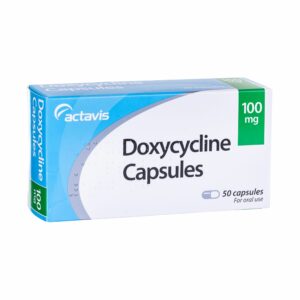Chlamydia
Chlamydia, a widespread STI caused by Chlamydia trachomatis, often goes undetected due to its asymptomatic nature, emphasizing the importance of regular screening. Untreated, it can cause severe health issues but is effectively treatable with antibiotics. Explore our selection of approved chlamydia medications.

-
About Chlamydia
Chlamydia is a widespread sexually transmitted infection (STI) caused by the bacterium Chlamydia trachomatis. It is most prevalent among sexually active young adults and adolescents. The infection predominantly affects the genital organs but can also infect the rectum, throat, or eyes. Due to its ability to be largely asymptomatic, chlamydia is often referred to as a “silent” infection, contributing to its stealthy spread among populations.
● Transmission: Chlamydia is transmitted through sexual contact, including vaginal, anal, and oral sex. It can also be passed from an infected mother to her baby during childbirth, potentially leading to pneumonia or conjunctivitis in the newborn.
● Complications: If left untreated, chlamydia can lead to serious health issues. In women, the infection can spread to the reproductive organs and cause pelvic inflammatory disease (PID), which can result in long-term pelvic pain, blocked fallopian tubes, and infertility. Men can develop epididymitis, which may lead to infertility. Moreover, both sexes are at increased risk of contracting or transmitting HIV when infected with chlamydia.
-
Symptoms
Chlamydia often presents subtly, making it challenging to detect without testing. However, when symptoms do occur, they can include:
In Women:
● Painful urination
● Increased or unusual vaginal discharge
● Pain during intercourse
● Bleeding between periods or after sex
● Lower abdominal or pelvic painIn Men:
● Discharge from the penis
● Painful urination
● Swollen or tender testicles
● Discomfort or pain around the anusOther Possible Symptoms:
● Rectal pain, discharge, or bleeding
● Eye redness or irritation (conjunctivitis)
● Sore throat (associated with oral contact) -
Diagnosis
Chlamydia is diagnosed through a variety of tests that identify the presence of the Chlamydia trachomatis bacterium. Here are the standard methods used for diagnosing this infection:
● Nucleic Acid Amplification Tests (NAATs): These are the most sensitive tests for detecting chlamydia and can be performed on urine samples or swabs taken from the cervix, vagina, urethra, or rectum. NAATs identify the genetic material (DNA or RNA) of the chlamydia bacteria.
● Swab Tests: A health provider may take a swab of fluid from the vagina, cervix, urethra, anus, or throat, depending on the suspected infection sites.
● Urine Test: This involves collecting a urine sample to detect the presence of chlamydia bacteria. Urine tests are commonly used for screening purposes, especially in men.
● Rapid Tests: Some clinics offer rapid tests that can provide results on the same day. These tests typically use swabs and are less sensitive than NAATs.
● Additional Testing: If symptoms suggest complications such as pelvic inflammatory disease (PID) or epididymitis, further diagnostic imaging or tests might be required.Diagnosis also includes a comprehensive sexual history to help determine the likelihood of chlamydia and other sexually transmitted infections. Early diagnosis and treatment with antibiotics, such as azithromycin or doxycycline, are crucial to prevent severe complications and the spread of the infection.
-
Treatments
Prescription medications play a crucial role in the effective treatment of chlamydia. Doxycycline is a widely used antibiotic that is particularly effective against chlamydia when taken properly under medical guidance.
How Doxycycline Works:
● Antibiotic Action: Doxycycline falls under the category of tetracycline antibiotics. It works by inhibiting the protein synthesis of bacteria, thereby stopping the growth and spread of the bacteria.
● Treatment Course: For chlamydia, Doxycycline is typically prescribed as a course lasting one week. The usual dosage is 100mg taken twice daily for 7 days.
● Effectiveness: This antibiotic regimen is known to be approximately 97% effective in treating chlamydia infections, making it a reliable option for eradicating the bacteria when taken as directed.Doxycycline is an excellent choice for those seeking effective, fast-acting treatment for chlamydia. It is essential, however, to complete the full course of the medication to ensure complete eradication of the infection.
-
Prevention Strategies
Preventing chlamydia, involves a combination of personal precautions, medical interventions, and public health strategies:
● Use of Condoms: Consistently using latex condoms during vaginal, anal, or oral sex significantly reduces the transmission of chlamydia.
● Regular Screening: Regular STI screenings are crucial, especially for sexually active individuals under 25, those with multiple partners, or those with a new partner. Early detection helps prevent the spread of the infection.
● Mutual Monogamy: Engaging in a long-term mutually monogamous relationship with a partner who has tested negative for STIs can prevent chlamydia.
● Avoid Douching: Women should avoid douching as it disrupts the natural balance of bacteria in the vagina, which can increase the risk of infections.
● Educational Outreach: Increased public health education can help raise awareness about chlamydia and its potential health consequences, promoting safer sexual behaviors.
● Treatment Compliance: For those diagnosed with chlamydia, it’s important to complete the prescribed medication regimen and follow up with a healthcare provider to ensure the infection is fully cleared.













